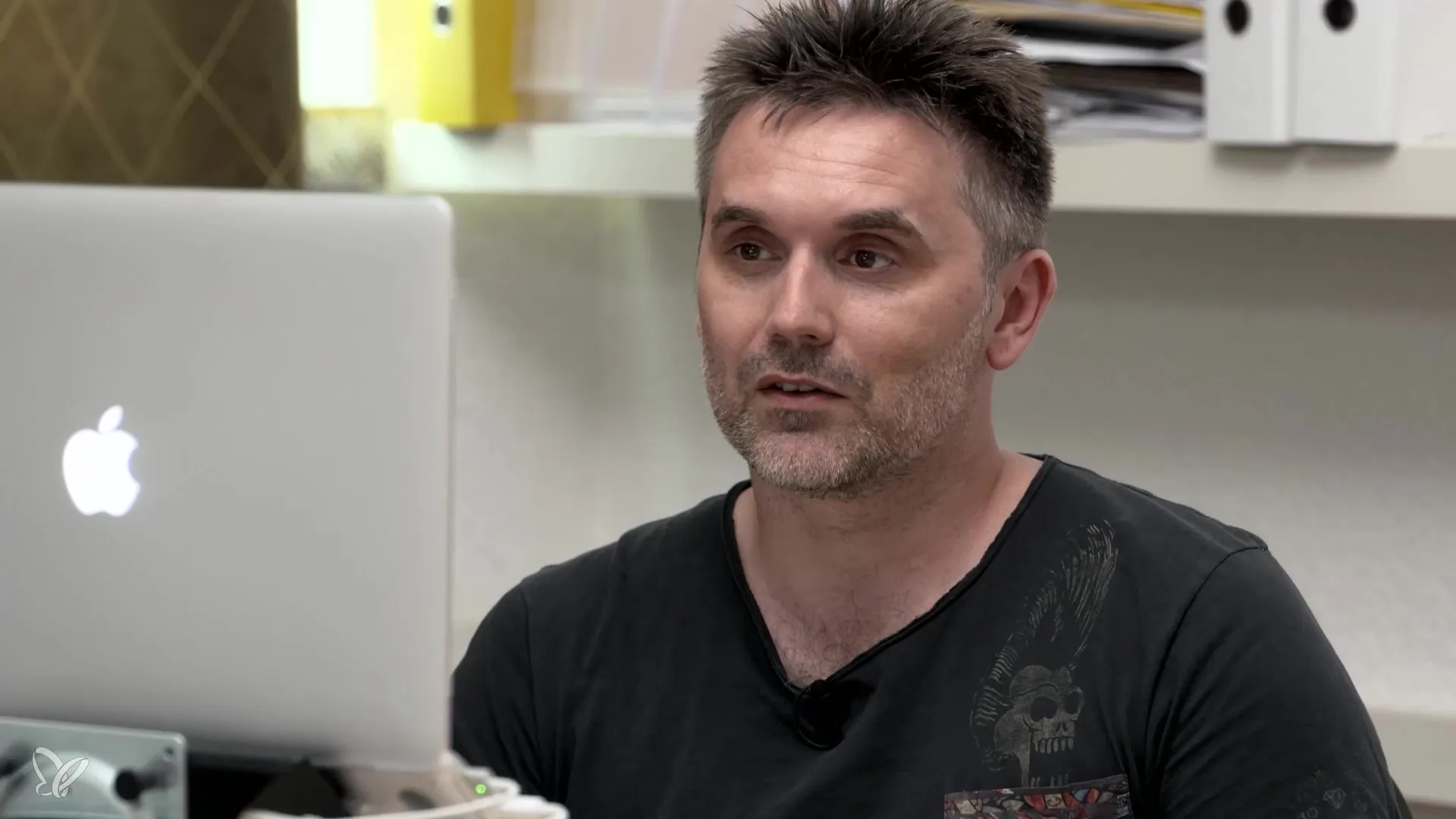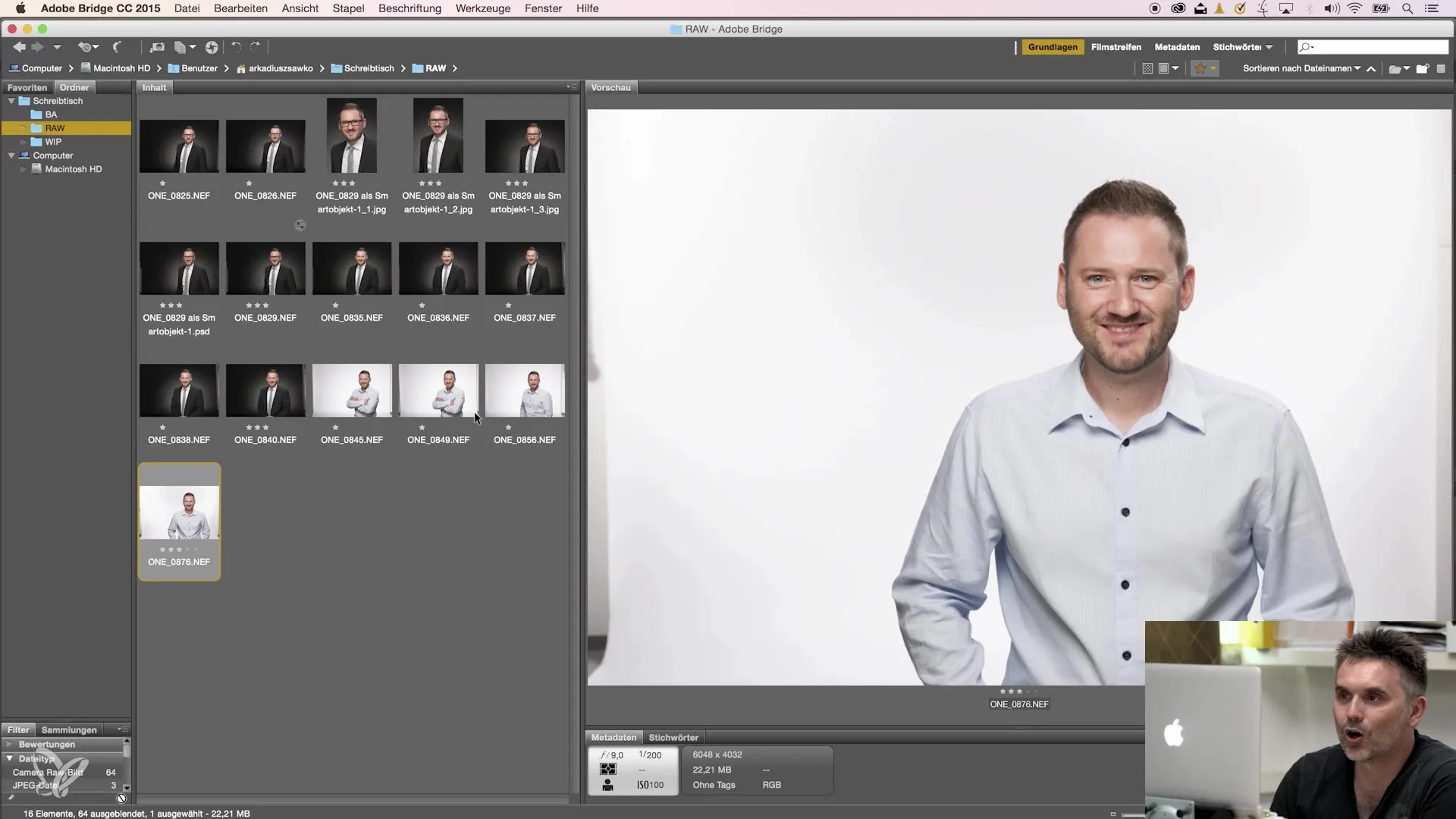The selection of the right images is a crucial step in portrait photography, especially when it comes to business-portraits. Here, not only the technical quality is in focus, but also how well the image reflects the personality and professionalism of the client. In this tutorial, you will learn how to make the optimal image selection, especially with light backgrounds. Arek will show you the process steps that will help you find and choose the best shots.
Key insights
- Work systematically and evaluate your images based on specific criteria.
- Pay attention to the body language and facial expressions of your models.
- Use lighting conditions and backgrounds to influence the mood of the photos.
- Document the selection process to keep track of the criteria you applied.
Step-by-Step Guide to Image Selection
Initial Steps of Image Selection
To start your image selection effectively, open your photos in Adobe Bridge in preview mode. This allows you to compare the images side by side and make an initial assessment. Begin by quickly reviewing the images to get a first impression.
Rating and Evaluating Images
Rate the images with stars to highlight the best shots. In this step, you decide which image is most suitable for your client. Focus on how the expression and body language work in each image. For example, look at the gestures and note how they communicate with the person.

Analyzing Facial Expressions
Pay attention to the facial expressions of the depicted individuals. A friendly smile can have a positive effect on the portrait's impact. If the smile looks forced, like in a "smile for the camera" shoot, it is often not advantageous and could even have a negative effect.
Evaluating Body Language
Body language is very important. Decide whether the positioning of the arms (e.g., crossed arms) signals an open or closed attitude. Even if the posture seems withdrawn, a friendly facial expression can compensate for this. Observe how the overall body posture affects the perception of the portrait.

Differences in Composition
Note the differences in the individual images. If the image has a light gradient background, it could drastically change the image's effect. Ensure that the person is well positioned in the image so that the size is appropriate in relation to the background. This contributes to the overall impact of the portrait.
Background and Lighting
Light plays a crucial role in portrait photography. Lighting techniques can be used to shape the tone and atmosphere of the image. Consider how different lighting setups (e.g., bright or soft) influence the overall impression of your portrait.

Selecting the Best Photos
After you have selected a series of images, go through the individual shots once again. Pay attention to whether the communication with the person in the image is actually well represented. A smiling face usually appears inviting, while a too serious expression is perceived rather negatively.

Documenting the Selection Process
Record which selection criteria you applied for each image. This allows you to reference your experiences next time. Also, post your preferred shots and analyze what you particularly like about these images.

Summary –
The image selection is one of the critical phases in portrait photography. With the right approach and a sharp eye for details, you ensure that both you and your client are satisfied with the final product. Pay special attention to body language, facial expression, and lighting conditions. Take your time with each step and document your insights.
Frequently Asked Questions
How many images should I select?It is advisable to present a selection of at least five to ten images to provide your client with various options.
What if the client is not satisfied with the image?Discuss the image with the client and ask about their specific preferences. This can help you better tailor a future selection to their taste.
What role does the background play in image selection?The background can significantly influence the mood and impression of the image. Light backgrounds often appear friendlier, while dark backgrounds can evoke seriousness.
Is the technical quality of the images more important than the expression?Both play a role. Technical quality is important, but the expression and emotional impact are crucial for how the image resonates with the viewer.
How can I document my selection?Create a digital file or a physical portfolio where you keep track of the criteria and your evaluation system for each image selection.


